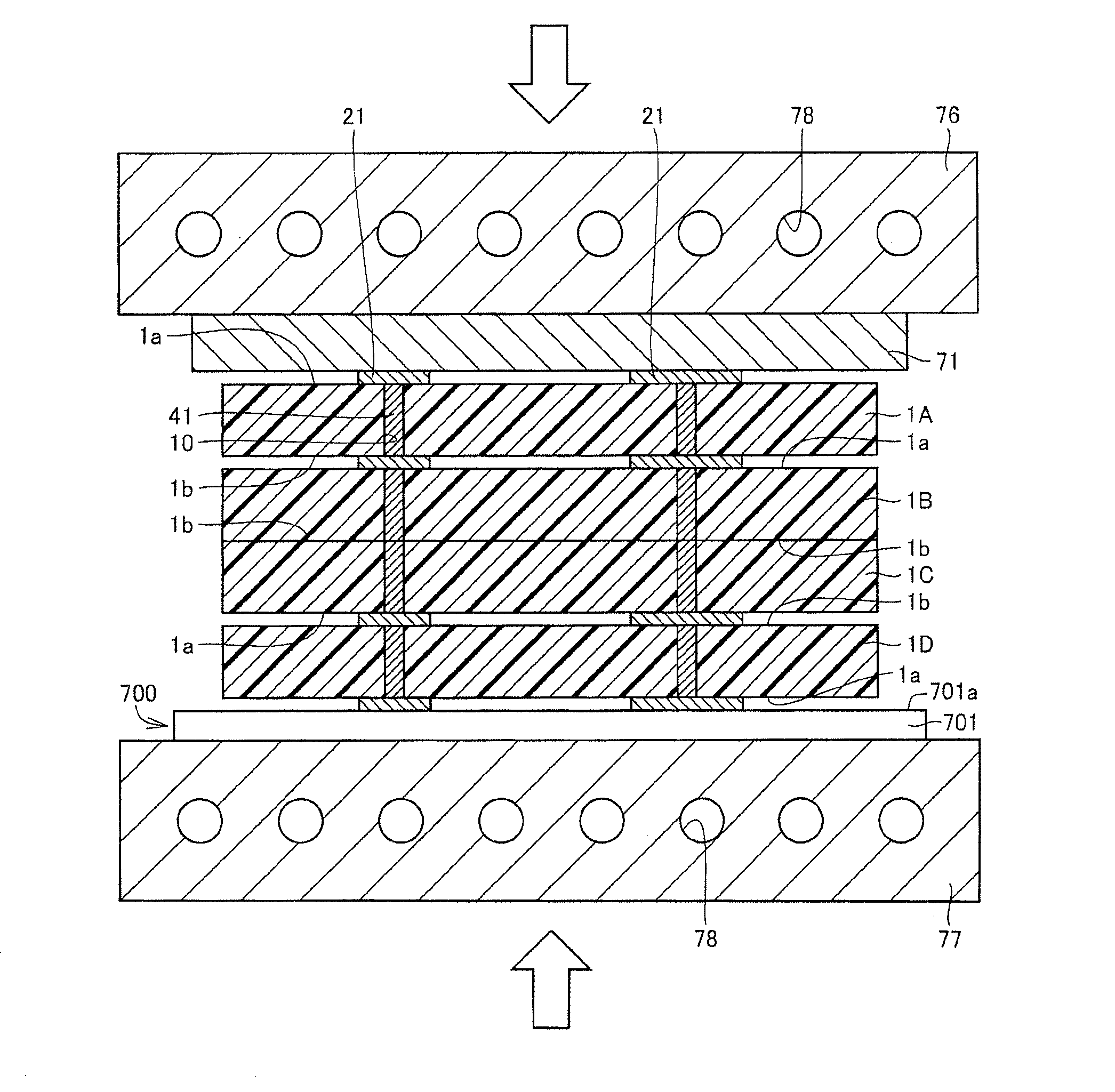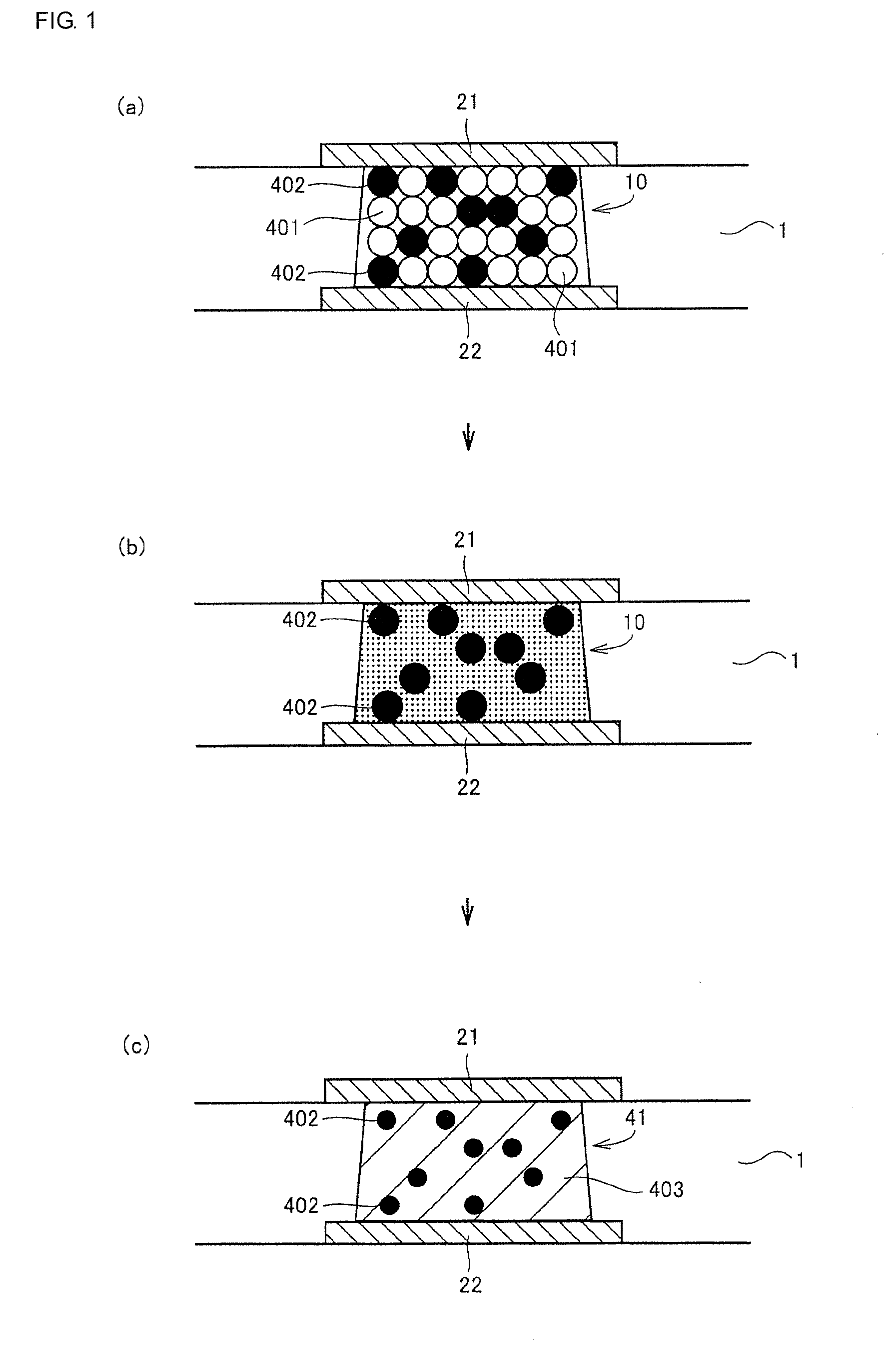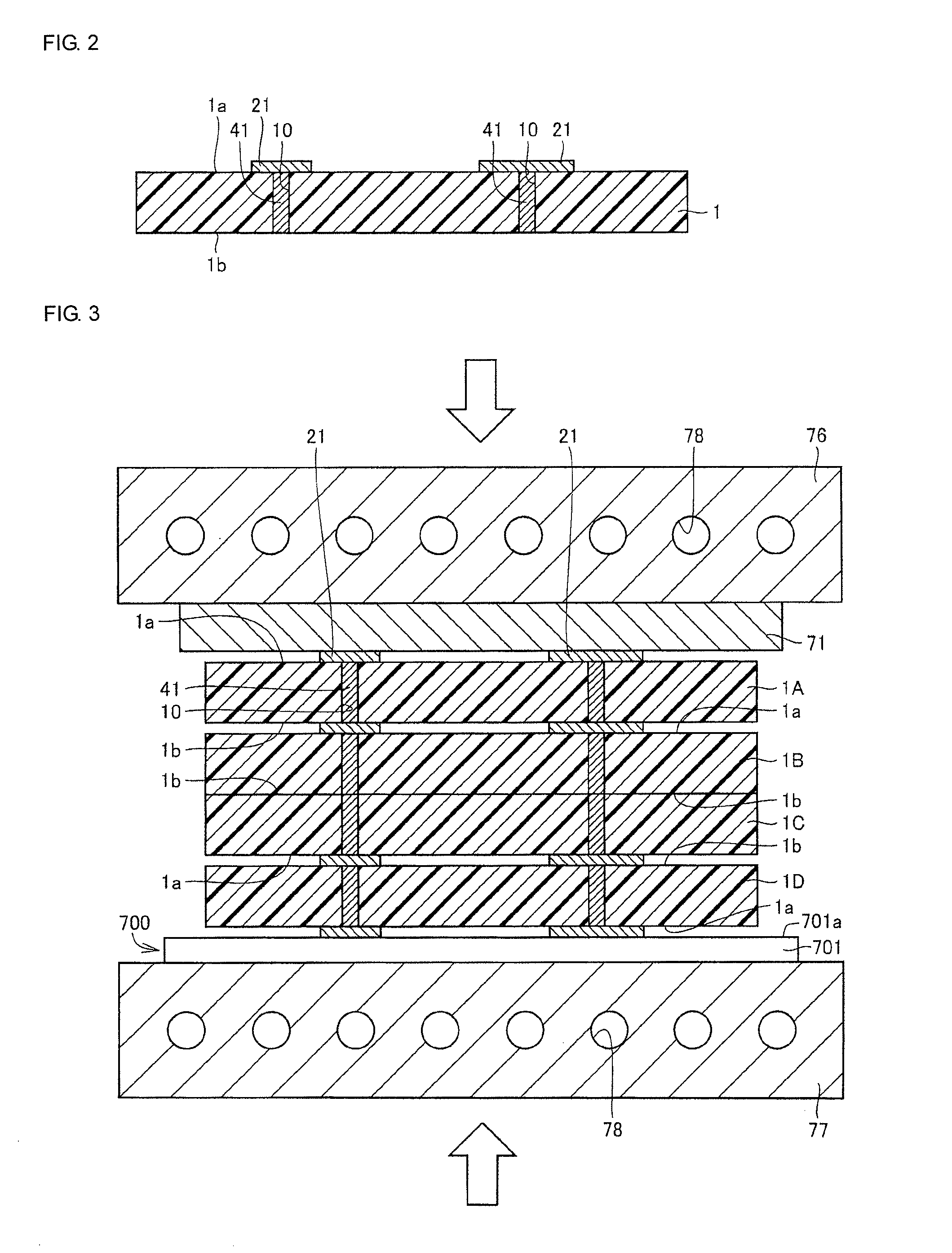Multilayer circuit board and method for manufacturing the same
a multi-layer circuit board and manufacturing method technology, applied in the direction of sustainable manufacturing/processing, final product manufacturing, etching metal masks, etc., can solve the problems of long treatment time, difficult to form via-hole conductors between intended layers in the manufacture of multi-layer circuit boards, and high chemical content in chemical plating, etc., to achieve high melting point, high electrical conductivity, and high heat resistance
- Summary
- Abstract
- Description
- Claims
- Application Information
AI Technical Summary
Benefits of technology
Problems solved by technology
Method used
Image
Examples
embodiment 1
[0118]A multilayer circuit board according to the present embodiment includes a via-hole conductor for electrically connecting conductive wiring layers in a resin layer.
[0119]A method for manufacturing a multilayer circuit board according to an embodiment of the present invention will be described below with reference to FIGS. 2 and 3.
[0120]Referring to FIG. 2, a via-hole 10 is formed from the back side (surface 1b) of a resin sheet to a conductive wiring layer 21. The via-hole 10 is formed through laser processing using a carbon dioxide laser or the like at each location at which an inner via (via-hole conductor) is to be formed. After boring a hole in the resin sheet, smears of resin residues are removed.
[0121]The via-hole 10 is then filled with an electroconductive paste, for example, by screen printing to form a via-hole conductor 41. The electroconductive paste produces an intermetallic compound having a melting point of 300° C. or more by a reaction between the first metal and...
embodiment 2-1
[0135]A multilayer circuit board according to the present embodiment includes resin layers, which include a via-hole conductor for electrically connecting conductive wiring layers to each other. The multilayer circuit board includes an electronic component having an external electrode.
[0136]The via-hole conductor containing the intermetallic compound described above is more rigid and less flexible than copper for use in electrodes. Thus, the via-hole conductor can protect the electronic component from bending stress.
[0137]When the intermetallic compound is produced by a reaction between Sn and Cu—Ni, the diffusion velocity of Sn and Cu—Ni is 10 times or more higher than the diffusion velocity of a Sn and Ag or Sn and Cu metal system. The resulting via-hole conductor therefore generally has fine pores (voids). The pores act as cushions against external impacts or loads and reduce impacts or loads on the electronic component. Thus, a low-profile multilayer circuit board that includes ...
embodiment 2-2
[0147]A multilayer circuit board according to the present embodiment will be described below with reference to FIG. 6. The processes illustrated in FIGS. 5(a) to 5(g) in the present embodiment are the same as in Embodiment 2-1 and will not be further described.
[0148]An electronic component 5 is appropriately placed while a plurality of resin layers are stacked. The electronic component 5 is finally disposed in the cavity 11 (FIG. 6(h)). In the present embodiment, a via-hole 101 is disposed at a location at which a protective via-hole conductor 411 not connected to a conductive wiring layer 21 is to be formed. The via-hole 101 is filled with an electroconductive paste 401. The electroconductive paste 401 is composed of the same material as the via-hole conductor 40.
[0149]The resin layers are stacked such that the surfaces of adjacent resin layers 1 on which the conductive wiring layer 21 is disposed do not face each other. The electronic component 5 includes an external electrode 51 ...
PUM
| Property | Measurement | Unit |
|---|---|---|
| Fraction | aaaaa | aaaaa |
| Percent by mass | aaaaa | aaaaa |
| Percent by mass | aaaaa | aaaaa |
Abstract
Description
Claims
Application Information
 Login to View More
Login to View More - R&D
- Intellectual Property
- Life Sciences
- Materials
- Tech Scout
- Unparalleled Data Quality
- Higher Quality Content
- 60% Fewer Hallucinations
Browse by: Latest US Patents, China's latest patents, Technical Efficacy Thesaurus, Application Domain, Technology Topic, Popular Technical Reports.
© 2025 PatSnap. All rights reserved.Legal|Privacy policy|Modern Slavery Act Transparency Statement|Sitemap|About US| Contact US: help@patsnap.com



